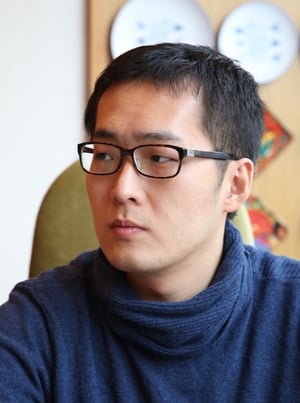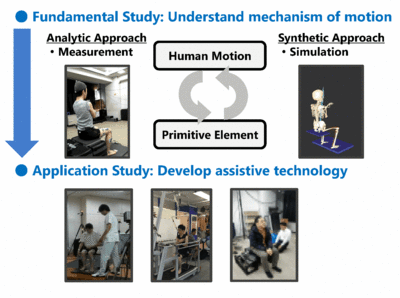TOPICS
- Research
- 2018
Young Faculty:Research Assistant Qi An
Young Faculty:012
Research Associate Qi An , ASAMA Lab., Department of Precision Engineering

<Biography>
2008.03 B.S, System Innovation Course, Faculty of Engineering, The University of Tokyo
2010.05-2011.05 Student Internship at University of Washington
2011.09 M.S., Department of Precision Engineering, Graduate School of Engineering, The University of Tokyo
2014.09 PhD Degree, Department of Precision Engineering, Graduate School of Engineering, The University of Tokyo
2012.04-2015.03 JSPS Research Fellowship (DC1)
2014.11-2015.03 Visiting Researcher at Technical University Munich
2015.04-2017.03 Project Assistant Professor, Department of Precision Engineering, The University of Tokyo
2015.10- Visiting Research, RIEN BSI
2017.04- Assistant Professor, Department of Precision Engineering, The University of Tokyo
<About the Research>
Recently the population in many countries including Japan has been aging. Many elderly people suffer from declined motor ability, and the number of hemiplegia patients who have impaired movement is increased due to aging. In order to solve these problems, our laboratory studies a mechanism of human movement as fundamental research and we develop assistive technology as application research.
Our research group has been investigating human motion based on muscle synergy hypothesis, which suggests that humans do not control their individual muscle but they control synchronized activation of several muscles (called muscle synergy). In fundamental research, we employ two approach, analytic approach and constructive approach in order to clarify mechanism of human motion. In the analytic approach, human motion is measured and data is analyzed to identify shared and varying components. The constructive approach enables us to understand human motion through synthesis of the motion from elements, such as muscle synergy.
From analytic approach, muscle synergies are extracted from muscle activation, body trajectory and floor reaction force which are measured from human sit-to-stand motion. Results of our study show that humans can adaptively change amplitude and duration time of each synergy to adapt different chair heights and different motion speeds. On the other hand, constructive approach employs dynamic simulation to investigate whether muscle synergies can realize sit-to-stand motion. In measurement experiment with humans, it is difficult to test the condition in which humans fall down. However, simulation study could test such situation and it enabled us to identify the activation condition of muscle synergy in which humans actually achieved the motion without falling down.
As the application study, we collaborate with Morinomiya hospital to apply the muscle synergy theory to post-stroke patients in order to investigate how movement of stroke patients changes and how they recover through rehabilitation process. Additionally, we measure arm movement of physical therapists and we elucidate their skill of rehabilitation intervention. These recent studies showed that post-stroke patients could not control activation timing of muscle synergies well, but the patients improved the activation of muscle synergy through rehabilitation. Now we utilize this knowledge for research and development of assistive technology.

<Future aspirations>
Our study aims to realize a lively society in which the elderly people have long healthy life expectancy. As a fundamental study, expensive equipment and measurement apparatus, which take a long time to setup, can be used and these devices enable us to evaluate and analyze human mobility in detail. Using these technologies, we would like to further investigate what kind of rehabilitation intervention is useful for motor impaired patient and what training scheme is effective to improve the elderly’s motor function. Furthermore, we will proceed to develop a device which can easily evaluate and assist motor function of the patient and the elderly in hospital and home environment.
Qi An's home page:http://www.robot.t.u-tokyo.ac.jp/~an/

